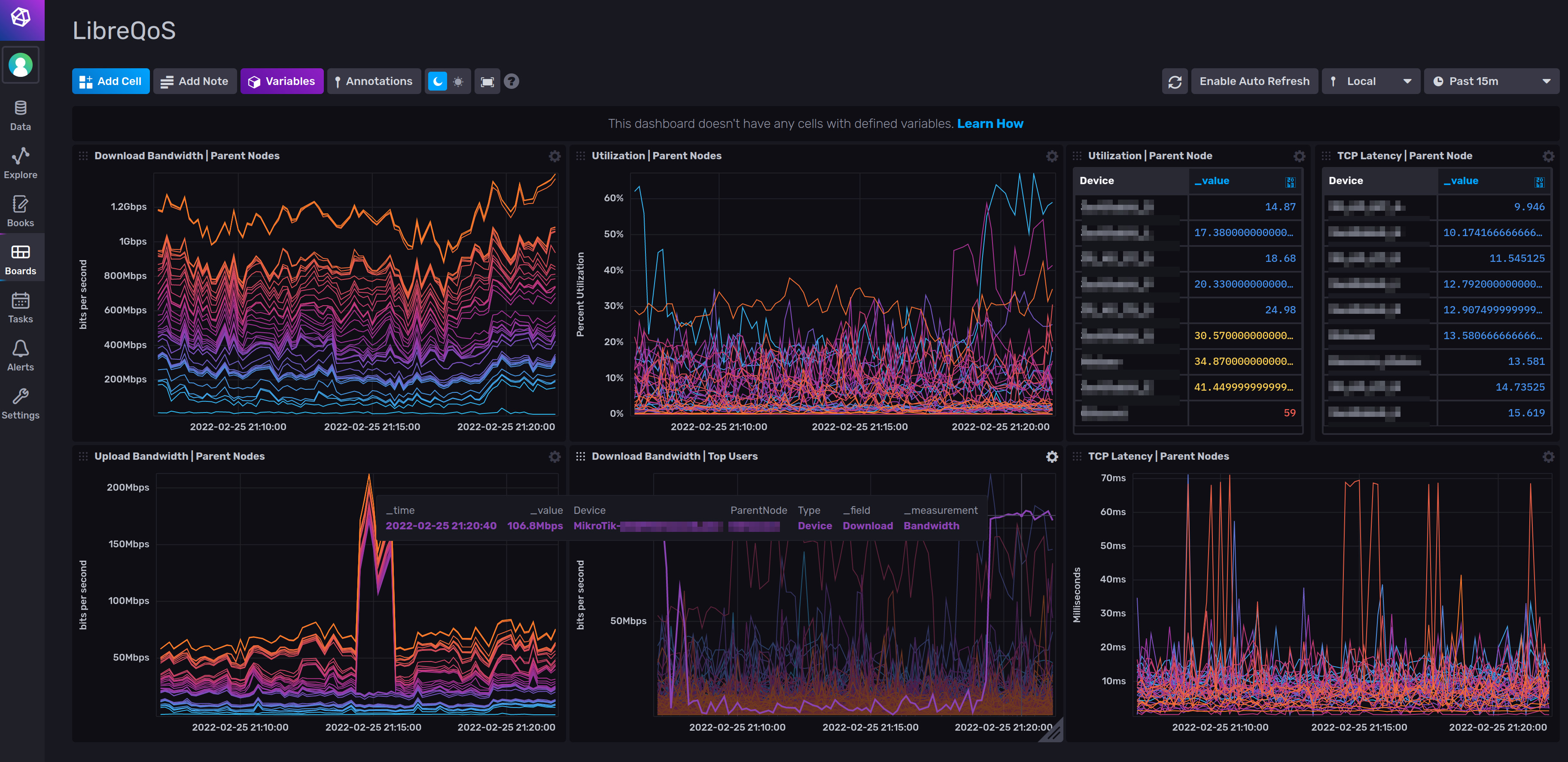| .. | ||
| xdp-cpumap-tc@888cc7712f | ||
| graph.py | ||
| graphBandwidth.py | ||
| graphLatency.py | ||
| influxDBdashboardTemplate.json | ||
| integrationUISP.py | ||
| ispConfig.py | ||
| LibreQoS.py | ||
| lqAPI.py | ||
| network.json | ||
| README.md | ||
| scheduled.py | ||
| Shaper.csv | ||
v1.1 (IPv4) (Beta)
Released: 2022

Installation Guide
Features
-
Tested up to 11Gbps asymmetrical throughput in real world deployment with 5000+ clients.
-
Network hierarchy can be mapped to the network.json file. This allows for both simple network heirarchies (Site>AP>Client) as well as much more complex ones (Site>Site>Micro-PoP>AP>Site>AP>Client).
-
Graphing of bandwidth to InfluxDB. Parses bandwidth data from "tc -s qdisc show" command, minimizing CPU use.
-
Graphing of TCP latency to InfluxDB - via PPing integration.
Considerations
- Any top-level parent node is tied to a single CPU core. Top-level nodes are evenly distributed across CPUs. Since each CPU can usually only accommodate up to 4Gbps, ensure any single top-level parent node will not require more than 4Gbps throughput.
Limitations
-
As with 0.9 and v1.0, not yet dual stack, clients can only be shaped by IPv4 address until IPv6 support is added to XDP-CPUMAP-TC. Once that happens we can then shape IPv6 as well.
-
XDP's cpumap-redirect achieves higher throughput on a server with direct access to the NIC (XDP offloading possible) vs as a VM with bridges (generic XDP).